Ensuring that your cooling tower runs properly even after continued use is important for the thermal efficiency of the plant. You will have to be vigilant to repair any damage that occurs in the cooling tower as soon as possible. Regular maintenance is the key to prolonging the life of all the constituent parts of the cooling tower. The main idea behind constant maintenance is to prevent microorganism growth.
Here are some ways to effectively repair and maintain cooling towers:
1. Chlorinate the Water

It is probably the best way to ensure that the water circulating in the cooling tower is disinfected and will not promote bacterial growth. Chlorination is a widely chosen and commercially preferred method for cleansing water. You can use Industrial-strength sodium hypochlorite or Calcium hypochlorite for chlorination purposes. Make sure that you research how much of the chemicals need to be put in the water so that the process is not overpowering. Cleaning the water is just one step of maintenance, so keep in mind that even after chlorination, you would have to drain it and clean the parts of the cooling tower.
2. Hot Deck Cleaning
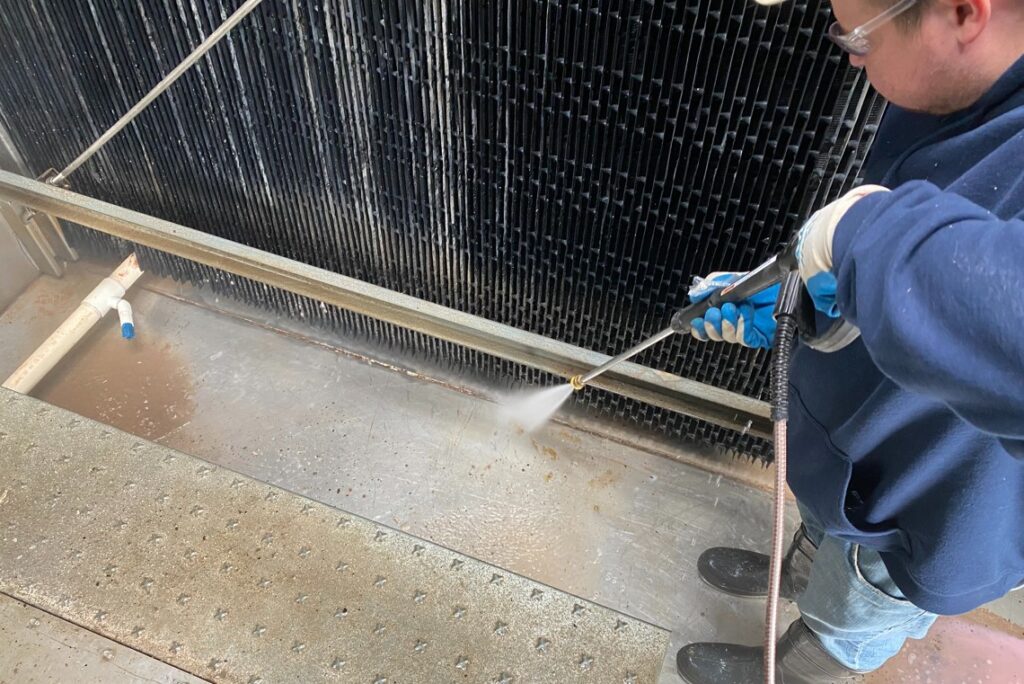
The natural process after chlorinating the water and draining it would be to remove any lime deposits on the various parts of the hot deck. The scale formation on the nozzle in other parts of the hot deck can stimulate bacterial growth after the water has been removed. All the surfaces need to be cleaned thoroughly to ensure that there is no persistent microorganism growth in the sediments. You can use a water spray with a specific amount of pressure to remove all the residues that have accumulated over time.
Hot deck cleaning will also involve visually inspecting the parts and seeing if there is any damage. Immediately change the parts that need changing and repair what’s broken. Nozzles of the hot deck are important as they directly impact the efficiency of the cooling tower. To ensure that the heat transfer is functioning just as expected, you need to inspect each nozzle carefully.
3. Handle Fan Housing and Tower Basin Together
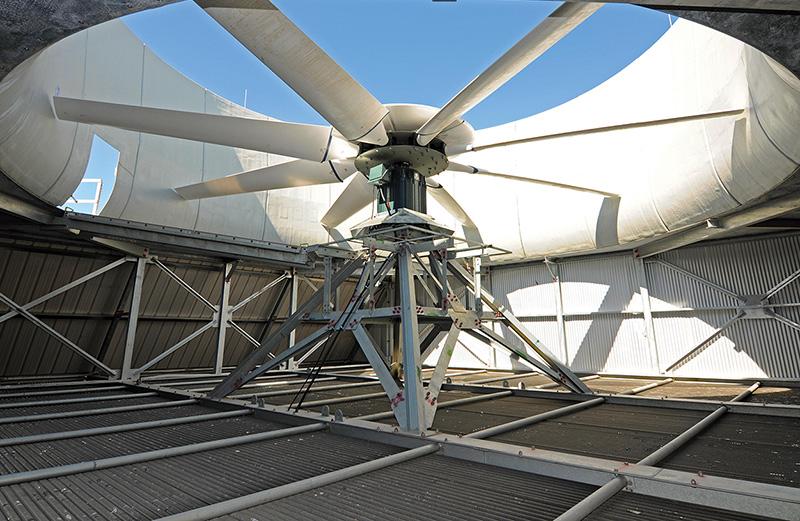
The maintenance of both fan housing, as well as towel basin, will include disinfecting the parts. Typically the maintenance will boil down to cleaning the parts thoroughly. Cleaning the components of a cooling tower is basically done to reduce the amount of air the bacteria is getting to multiply. You can use any of the disinfectants available for industrial purposes and use them in quantities prescribed for best results.
Legionella bacteria is the thread in cooling towers, and it multiplies through aeration. Regular cleaning and prevention of air permeating the cooling tower is the best way to ensure that people do not get sick when the bacteria travels through the system. Removing bacterial growth from fan housing and tower basin will prolong the life of the parts but will also help maintain a healthy work environment.
4. Do Not Forget the Distribution Pans
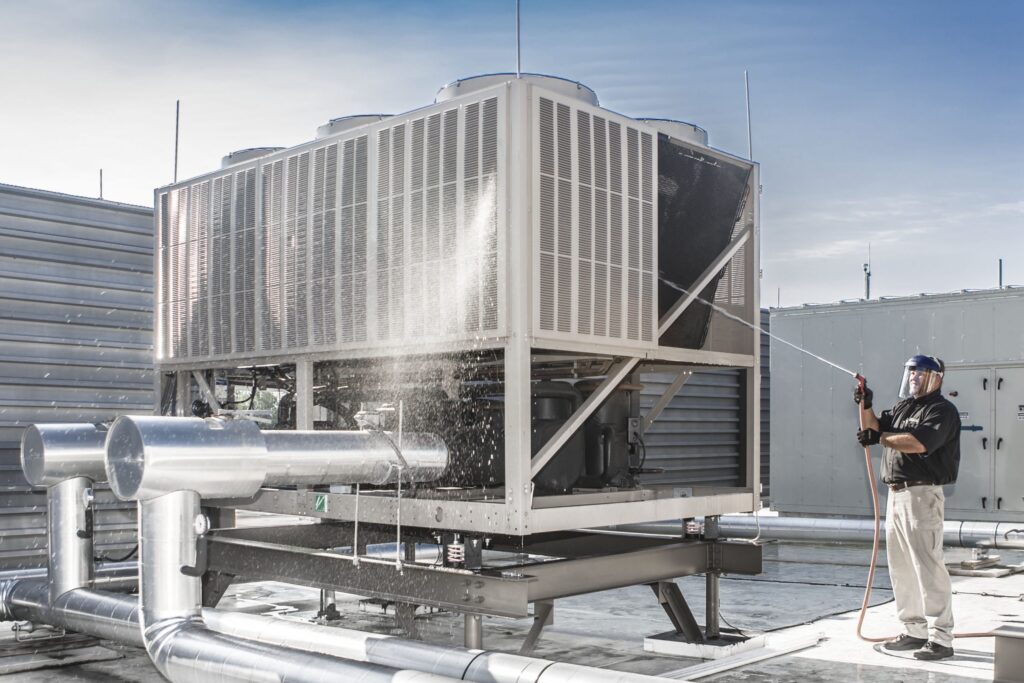
When you begin maintenance, you will have to be prepared to go through the cleaning of all the parts of the cooling tower. Distribution panels are the parts that you will first have to open and then cleanse properly. There is a possibility of sediment and sludge accumulating on the surface that you will have to remove manually. Do not forget to repair any parts that are damaged or are not functioning correctly.
5. Look Through all the Surfaces
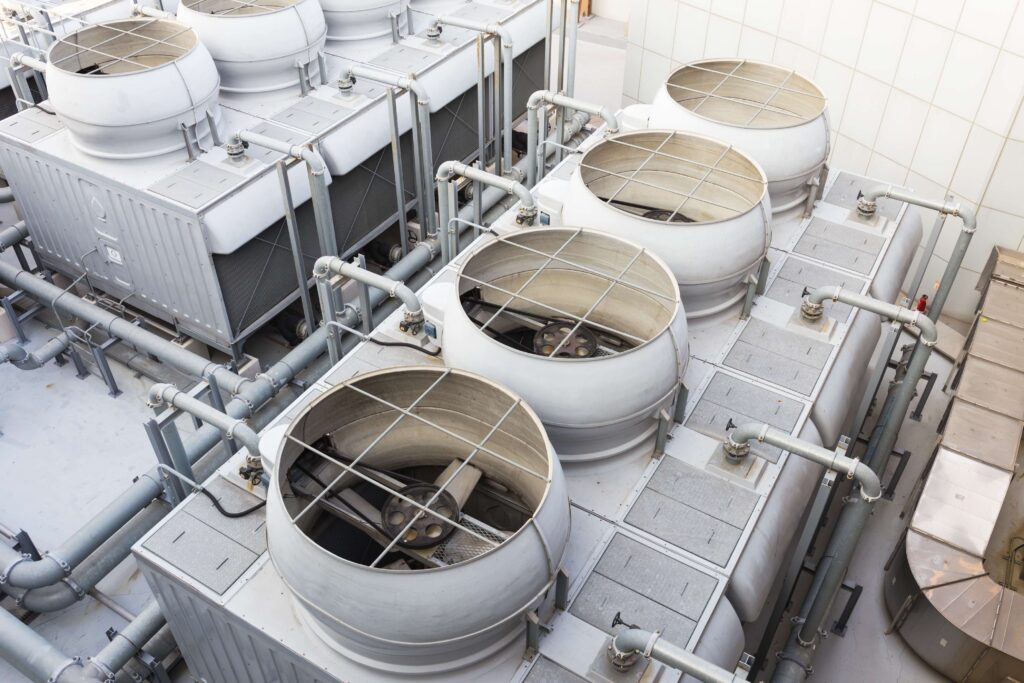
There is only so much that you can do for maintenance while operating the cooling tower. So you have to be extra cautious when you finally get down to the cleaning. The main concern with the accumulation of dirt in the cooling tower has to do with bacterial growth. Every part of the cooling tower needs to be checked at least once. After the water is drained, all the surfaces need to be cleaned. Even if the surface appears spotless, it would be better if you sprayed it with water just to make sure that any invisible microorganisms do not continue to cluster.
6. Disposal and Safety
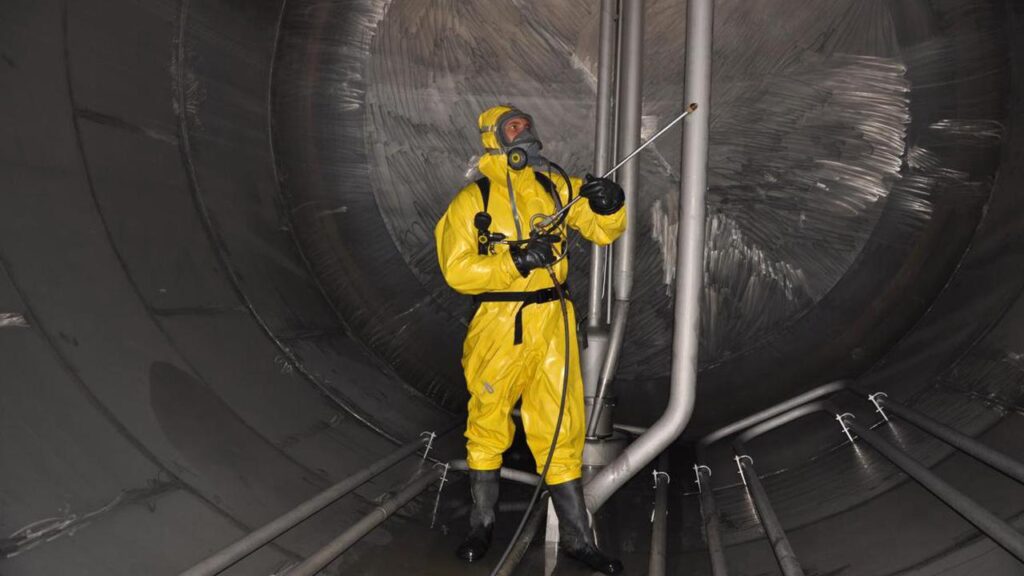
The dirt, debris, corroded material, sediment, and scales constitute trash that needs safe disposal. Health and safety standards need to be followed every step of the way when you are off disposing of the garbage. Even while raining the water of the cooling tower, you need to ensure that you are draining it through a pathway that is licensed for disposal. Proper disposal is crucial for environmental and sanitary purposes. There might be health and safety regulations in place where the cooling tower is located. So it is best to be aware of all the losses before you dispose of the sludge and water.
7. Vacuuming

Vacuuming is preferable for many maintenance workers and cleaners because it helps remove all the dirt and bacteria that could not be removed with water or something that your naked eye missed. Sometimes draining the entire tower is not possible, and vacuuming helps with proper cleaning of their water is still being a deterrent.
8. Make a Maintenance Schedule

A maintenance schedule would be extremely helpful in keeping up with the cleaning and repair of the cooling tower parts. While you are making a schedule, it is also advisable that you plan out everything that you are supposed to do during the maintenance period. Planning beforehand will save time and will also help you cover every aspect of cleaning and repairing the cooling tower. Do necessary calculations beforehand like that of the cycle of concentration, decide the quantity of chemicals that you are going to use during the cleaning process, and set a threshold on how much water you are going to use to avoid wastage.
Conclusion
Regular maintenance in a cooling tower is essential to prevent damage to constituent parts of the system. Cleaning the system is important because it will curb the growth of the bacteria. Repairing is made easy through a detailed maintenance schedule.
 Alternative News
Alternative News




